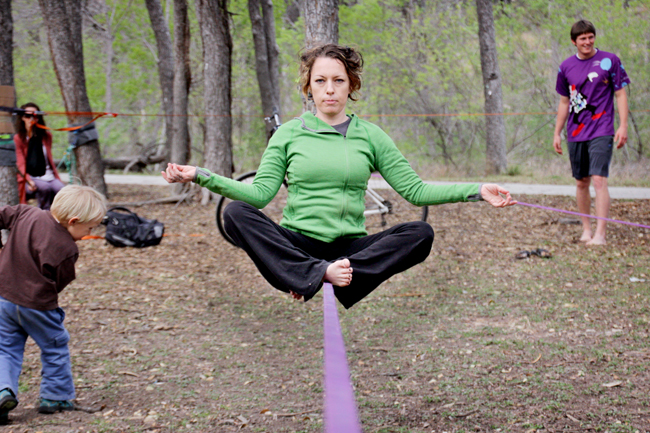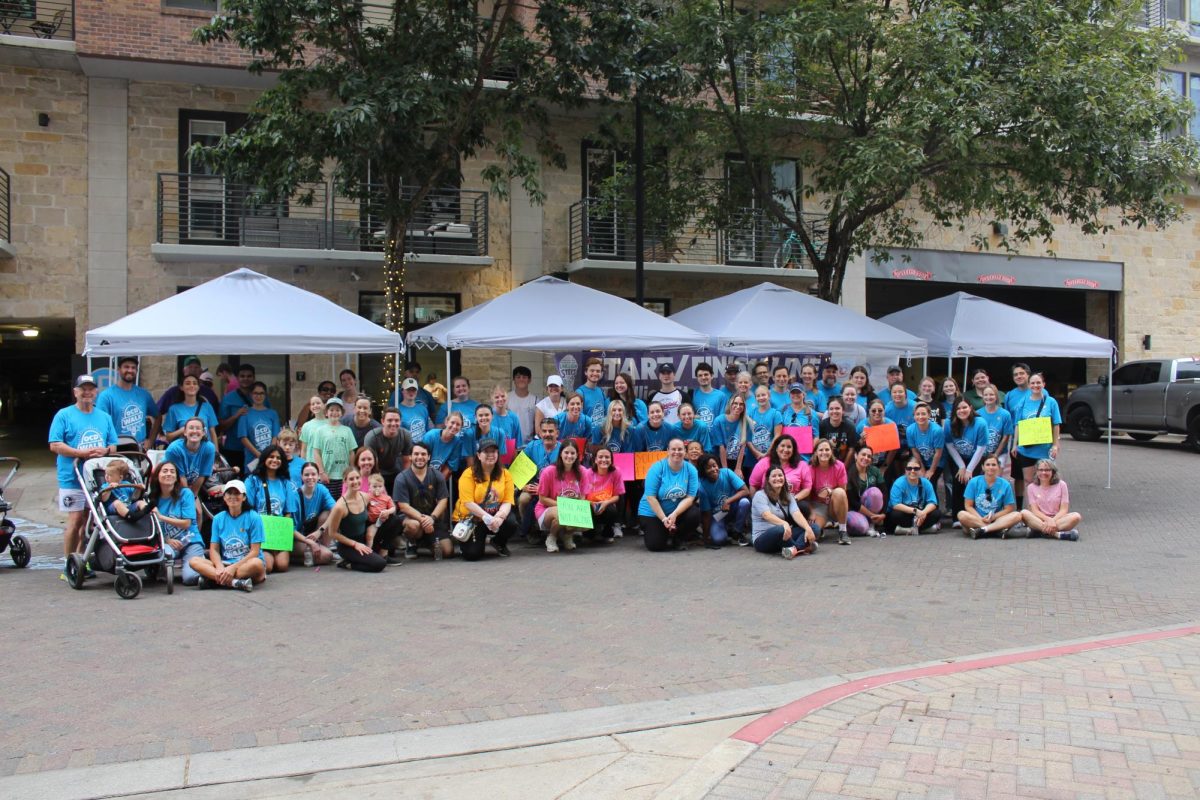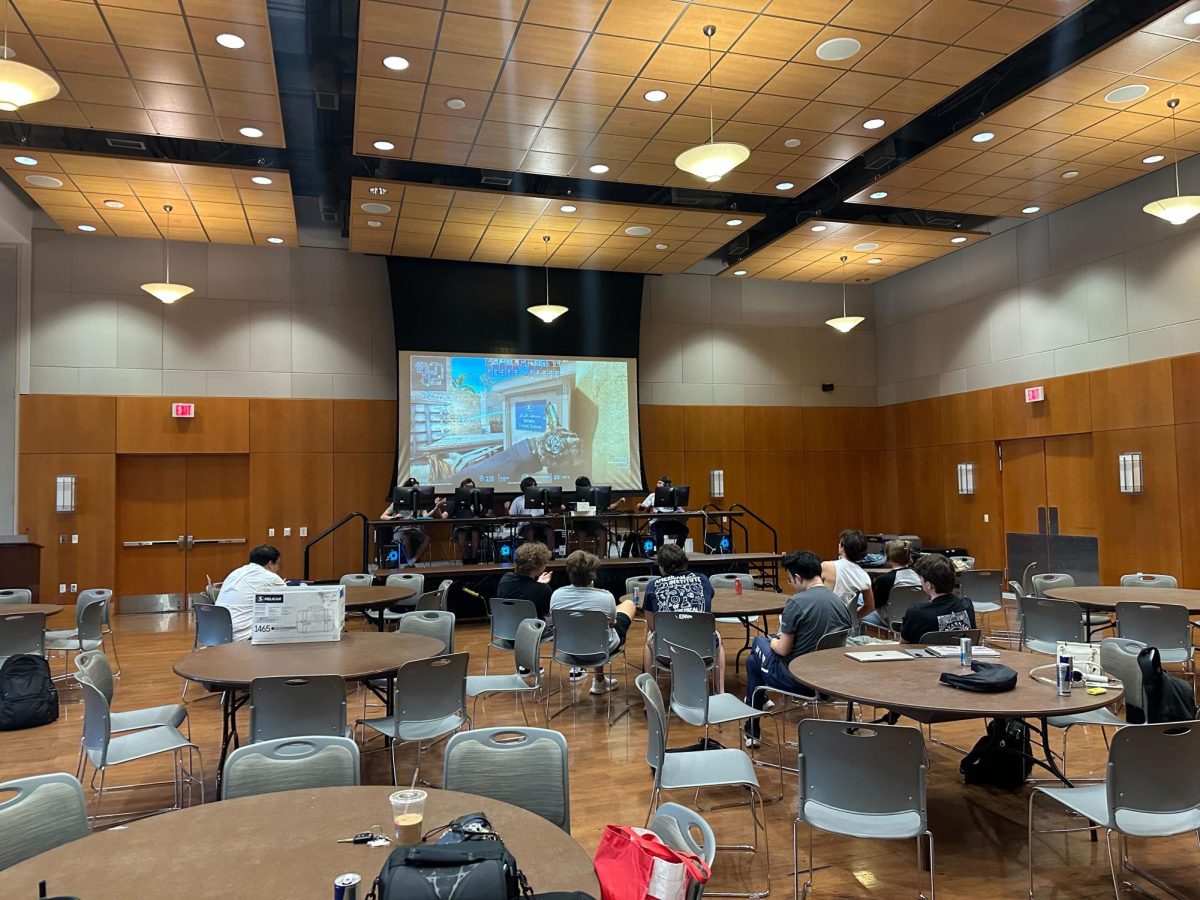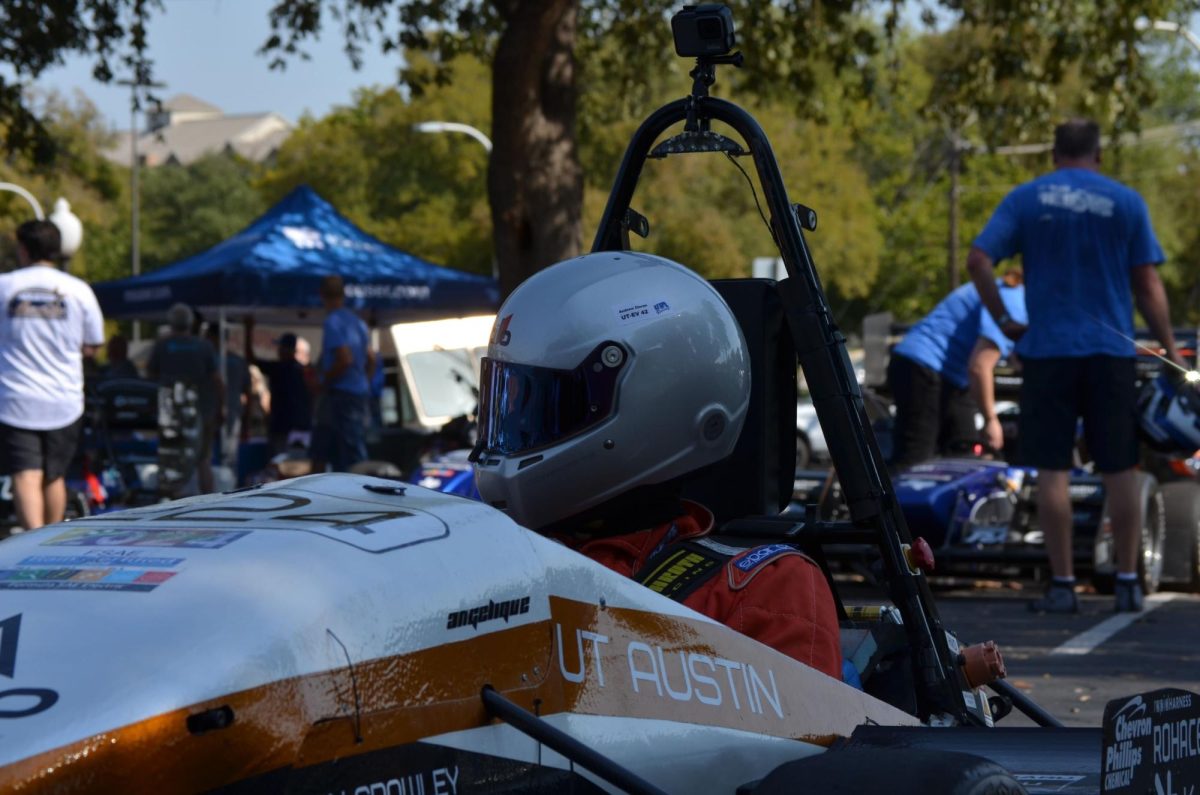The foot traffic on the MoPac Pedestrian Bridge has come to a standstill. Joggers have interrupted their rhythmic breathing to stand along the guardrail. Bikers have removed their feet from the pedals and now stand alongside their bicycles. A small crowd of observers has gathered and is waiting to see if the man on the line is going to fall.
About 20 feet beyond the iPhone camera lenses of the curious observers, John Wesley Dahle is walking across a line stretched between two of the pillars that help support MoPac Boulevard. He seems to be oblivious to the activity happening all around him. He is focused on a singular point in front of him and has put the panting joggers and the rowing team that passes beneath his dangling toes in the back of his mind. In this moment he has one goal: make it to the other end of the slackline.
Invented by rock climbers in the late 1970s, slacklining is a relatively new sport. It involves spreading a piece of webbing between two solid points and either balancing on it, walking across it, or even doing tricks or yoga on it. The line is dynamic, unlike a tightrope, and sags under the weight of the user and reacts to the user’s movements.
“It’s been around but it hasn’t really had a lot of exposure,” said Dan Daugherty, who has been slacklining for about two years. “Over the past couple of years it’s really kind of gotten bigger and bigger.”
Recently, groups of slackliners have become a staple in Zilker Park on sunny afternoons and weekends. There is a steadily growing community of slackliners in Austin, which is home to Faith Dickey, a world record holder in the sport.
Austinite Kimberly Margaret was introduced to the sport through Dickey, thinking at first that it would be something her children would be interested in. Instead, it was she that fell in love with the sport almost two years ago.
“I guess I got hooked,” Margaret said. “Why would I waste my time in exercise classes ever? Why wouldn’t I just go out and do something fun that I enjoy and that has a side effect, accidentally, of being a great workout?”
Margaret is one of about 60 slackline yoga instructors worldwide. YogaSlacking, a facet of slacklining, involves holding yoga poses atop the dynamic piece of webbing.
“Anything that you can do on a yoga mat, you can do on a slackline, and it intensifies the practice,” Margaret said.
Other facets of slacklining include highlining, which is slacklining at incredible heights, such as between two cliffs or rock faces.
“Highlining is mostly just fighting with yourself,” Margaret said. “If you’ve slacklined on the ground before, you know that you can walk across the line because you’ve done it before. But everything in your body is telling you that what you’re about to do is not safe, even though you’re tethered to the line. It’s mostly just a mental challenge.”
According to Margaret, the key to slacklining is being able to relax your mind and focus on one still point in front of you.
“That zen point that people talk about in meditation, that’s really easy to attain on a slackline because you can’t think about anything else,” Margaret said. “If you think about anything else, you’re not slacklining. You’re on the ground.”
The focus that Margaret referred to is many slackliners’ favorite aspect of the sport. It’s what keeps Cameron Felgate, a Texas State University student and slackliner since 2009, coming back to the line every week.
“Slacklining is really peaceful,” Felgate said. “When you get on that line, it’s just you and the line and nothing else matters.”
Published on March 7, 2013 as "Slacklining rises in popularity".


















